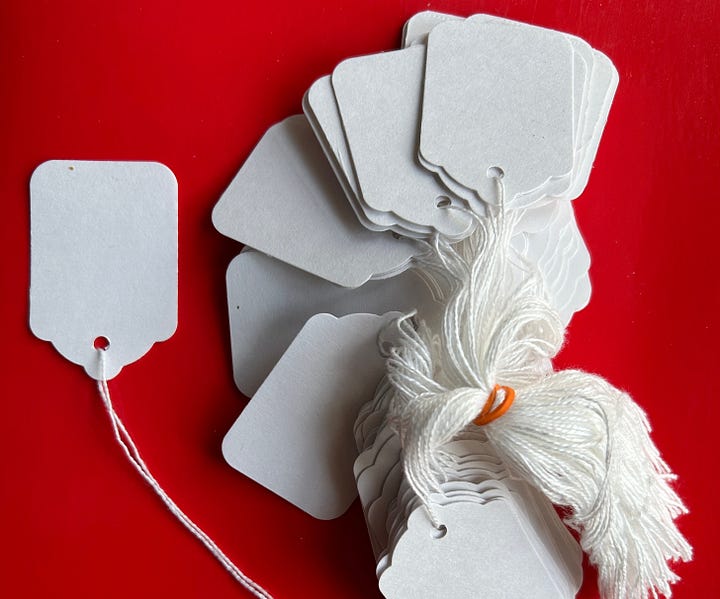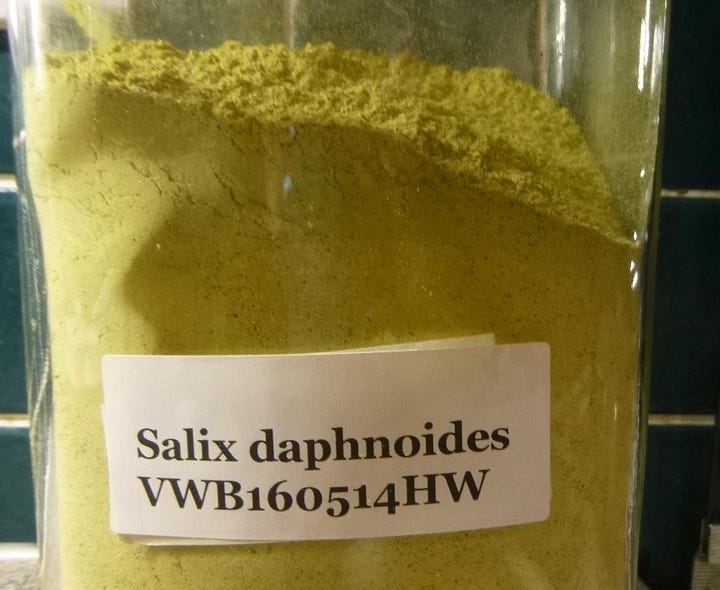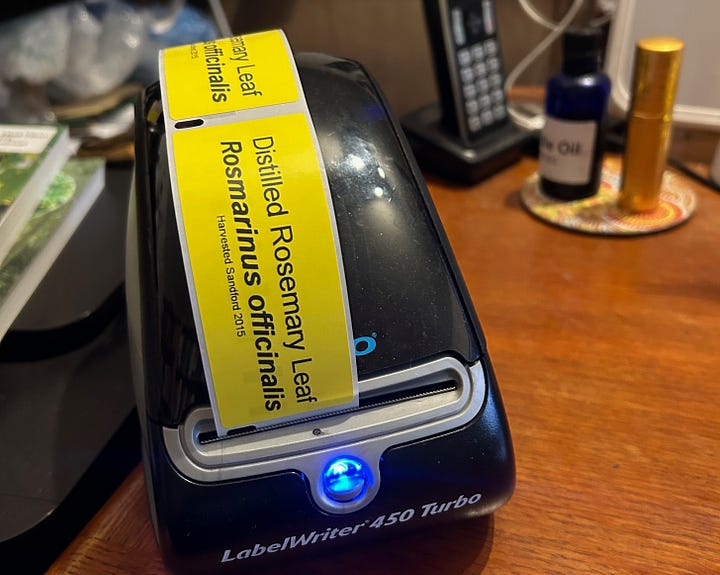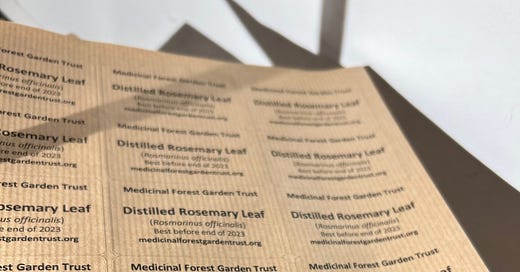MAKING RECIPES #2 Labels to catch the eye
Suggestions for labelling your herbal harvest and plant potions
What information must you include on labels for herbal remedies? How do you design an attractive herbal product label, one that shouts ‘look at me’? Can you print your own labels? These are all questions I have had to face over several decades of making herbal and body care preparations. So, here are some of my suggestions about designing labels and producing them in a cost-effective way. Surprisingly, I found that there is quite a lot to say about labels and labelling in relation to herbal remedies and products!
Labelling the harvest is good practice
So, rather obviously, labels are important, for safety information, marketing, and more. I think that good labelling practice starts with the herbal harvest. First, a label tells us the name of the plant, usually given as the full species name in Latin because there are many common names that can be readily confused. And this is essential after drying since many dried herbs look similar, if not correctly identified after drying then plant material has to be ditched. Second, the label can tell us which parts of the plant were harvested and when. I use small white tag labels that stay with the plant material through drying in a tray and further processing into a jar or paper bag. The harvesting date (at least the year) is useful for stocktaking so that you can heave out the old stuff - something that I do every January. Nothing needs to be wasted as most dried plants make a great mulch material or can be composted. Third and crucial for me is that a label enables storage in alphabetical order - it means I can find plant stocks easily! All of these benefits are easily achieved with handwritten tag labels which can be tied on or looped around the neck of a paper bag. I used to keep a harvest record book of plants with locations and amounts that was simple to cross-reference with the labels. If you are averse to handwriting labels then consider investing in a Dymo label printer, ideal for black and white printed label stickers of various sizes (I use these for address labels too). Some suppliers can prvide coloured labels too for a bit more variety with the Dymo label printer.




Plant material or simples for sale or storage
The harvest label for an individual plant needs to be transformed into basic information for a product label, with extra details if being marketed and sold. The details can include:
Plant species - Latin name and common name
Plant part - leaf, bark, root
Harvest details - location, year and batch number
Processing info - such as whole or cut herb
Date of packing - helpful to know how old this material is
Supplier and contact details - in case of queries or need to reorder
Grade - an indication of quality, whether organic, wildharvested, standardised constituents
Quantity - usually a net weight (in grams) or volume (in millilitres)
Labelling herbal preparations for individuals
There is a special kind of label needed for a herbal prescription made up for a specific person. What are the legal requirements for such prescription labels? In the UK herbal remedies for individuals that are prepared by a trained medical herbalist are not usually made available for public sale - but there are still professional standards on what should be included on the label. It is important to be clear about what is in a herbal preparation and when it was made, and there are procedures for reporting any unwanted effects. So a herbal prescription label should include:
Date of dispensing
Rx (Prescribed for) Person name
Practitioner name and contact details
Ingredients including alcohol and relevant proportions
Precautions or warnings
Dose and directions to take
The above details are good practice for any labelling of herbal remedies for specific individuals including your own use.
Herbal remedies for public sale
If you are buying a herbal remedy over the counter then look carefully at the label. Research shows that the best quality herbs in UK and Europe are sold under a traditional herbal registration (THR) which will be marked on the product packaging. This means the herbal remedy complies with quality standards relating to safety and manufacturing, and the label will provide information about how and when to use it. Note that the THR registration means that there is evidence of traditional use and does not necessarily confirm that there is clinical evidence of efficacy.
Making Recipes # series
This series of posts, Making Recipes #, gives my inside story on growing, harvesting, making, marketing, preserving, selling healing remedies and bodycare products, many from the medicinal forest garden. Over the years I have gained a fair amount of experience and insight in ways to grow and harvest plants including trees and shrubs. I will be reviewing my old recipe books and notes for details that may help you too. There will be useful tips such as equipment, packaging, preserving, safety, suppliers and other stuff that I have discovered, along the way. By writing these posts I aim to build up material towards another book publication. As a paid subscriber you can see all of this written material prepublication! You can access these Making Recipes posts and the full archive with a paid subscription, and also join the community chat talking about these posts.
Labels for herbal products and selling your herbal preparations
According to business advisers there are four types of labels that might apply to products - brand, information, description, and quality. There are specific rules about some types of product such as foods or medicines. If you are making herbal remedies to sell you may be thinking about label designs to get attention to your brand as well as provide important information about use and cautions. Likely you will want the label to explain what the product does and how it meets quality standards (such as organic accreditation) or maybe is wild-foraged or homegrown. But there are some important regulations which you need to be aware of, particularly to do with medicinal claims, as well as cosmetic or food labelling requirements, especially relating to health and safety.
What you cannot say on a herbal remedy label
Keep reading with a 7-day free trial
Subscribe to Medicinal Tree Woman to keep reading this post and get 7 days of free access to the full post archives.





